Regulatory Biosafety

How do biosafety policies differ across countries and regions ?
Biosafety policies are crucial for protecting public health and the environment from potential risks associated with biotechnology. These policies vary significantly across countries and regions due to differences in regulatory frameworks, cultural values, economic resources, and technological advancements. The United States has a well-established regulatory framework for biosafety, while the European Union has a strict regulatory framework. In Asia, China and India have relatively new biosafety laws. Cultural values also play a significant role in shaping biosafety policies across countries and regions. Economic resources can impact the implementation and enforcement of biosafety policies, and technological advancements can introduce new challenges and opportunities.

What are the potential consequences of not having adequate biosafety policies in place ?
Biosafety policies are crucial for handling and containing biological materials safely. Inadequate biosafety measures can lead to direct and indirect exposure to pathogens, spread of disease, environmental contamination, legal and ethical issues, and economic impacts. It is vital for institutions and researchers to prioritize biosafety measures to protect human health, the environment, and society.

What are the key principles of biosafety management ?
Biosafety management is a set of practices and procedures designed to minimize the potential risks associated with handling biological materials in research, clinical, and industrial settings. The key principles of biosafety management include risk assessment, facility design and engineering controls, personal protective equipment (PPE), standard microbiological practices (SMP), training and education, and incident response plans. Risk assessment involves identifying and evaluating potential hazards associated with working with biological materials, including assessing the risk of exposure to pathogens, toxins, and other harmful substances. Proper facility design and engineering controls are essential for effective biosafety management, including designing laboratory spaces that minimize the risk of exposure to hazardous materials and implementing appropriate ventilation systems. Wearing appropriate personal protective equipment (PPE) is crucial for protecting workers from exposure to hazardous materials. Standard microbiological practices (SMP) are essential for maintaining a safe working environment when handling biological materials. Training and education are critical components of biosafety management, and all personnel who work with biological materials must receive appropriate training on biosafety practices. Having an incident response plan in place is essential for managing accidents or spills involving hazardous materials.

How can we ensure biosafety in laboratories and research facilities ?
Ensuring Biosafety in Laboratories and Research Facilities: Biosafety is a critical aspect of any laboratory or research facility that deals with potentially hazardous biological materials. It involves implementing measures to prevent the exposure of personnel, the public, and the environment to these materials. Here are some ways to ensure biosafety in laboratories and research facilities: 1\. Establish clear policies and procedures, including creating a biosafety manual, providing training and education, and developing an emergency response plan. 2\. Maintain appropriate laboratory design and equipment, such as using physical barriers, ventilation systems, and decontamination areas. 3\. Practice good laboratory techniques, including using personal protective equipment (PPE), aseptic techniques, and proper waste management. 4\. Conduct risk assessments and implement controls, such as identifying potential hazards, evaluating the likelihood and severity of each identified hazard, and implementing appropriate administrative, engineering, and work practice controls. 5\. Monitor and review biosafety practices regularly, including conducting regular audits, encouraging feedback mechanisms, and continuously improving policies and procedures based on new information, technologies, or changes in the work environment.

What role does public health play in the implementation of biosafety policies ?
Public health is crucial for implementing biosafety policies, which aim to contain and manage biological agents that may pose a risk to human health, animal health, or the environment. Public health professionals play key roles in surveillance and disease detection, risk assessment and management, laboratory biosafety, vaccination programs, public education and awareness, policy development and implementation, emergency response, and international collaboration. By monitoring disease trends, assessing risks, maintaining laboratory safety, promoting vaccination, educating the public, developing policies, responding to emergencies, and collaborating internationally, public health professionals help protect individuals and communities from biological hazards.

How do biosafety policies evolve in response to emerging infectious diseases and pandemics ?
Biosafety policies are evolving in response to emerging infectious diseases and pandemics. The evolution is driven by scientific advancements, global health initiatives, and lessons from past outbreaks. Key factors driving this evolution include: - Scientific advancements such as research and development and genomic sequencing. - Global health initiatives like international collaboration and surveillance systems. - Lessons learned from past outbreaks, leading to review and revision of policies and the adoption of best practices. Examples of evolved biosafety policies include: - Laboratory biosafety with clear classification systems (BSL) and standard operating procedures (SOPs). - Public health measures such as infection prevention and control (IPC) and vaccination programs. - Travel restrictions and quarantine measures like entry screening and quarantine regulations. - International regulations and agreements, including the Biological Weapons Convention (BWC) and the Global Health Security Agenda (GHSA). The continuous evolution of biosafety policies is crucial for managing risks associated with biological agents and protecting public health.

How do biosafety policies impact the research and development of new drugs and vaccines ?
Biosafety policies play a crucial role in drug and vaccine development by promoting safety, protecting public health, preserving the environment, and fostering scientific progress. These policies provide guidelines for handling hazardous materials, maintaining a clean laboratory environment, and preventing accidental exposure or contamination. By adhering to these standards, researchers can work more safely and effectively, reducing the risk of accidents or injuries that could slow down or halt their work. Additionally, biosafety policies help protect public health during clinical trials, minimize the risk of adverse reactions or side effects, and ensure that any new drugs or vaccines are safe before they reach the market. Biosafety policies also govern the disposal of hazardous waste materials and prevent accidental spills or releases of dangerous substances, protecting the environment from long-lasting harm. Finally, these policies promote collaboration and information sharing among researchers, leading to faster and more efficient drug and vaccine development while ensuring that research findings are reliable and reproducible.

Can you provide examples of successful biosafety policies and their impact on public health ?
Biosafety policies are crucial for protecting public health by preventing the release of hazardous biological agents into the environment. Successful biosafety policies include Institutional Biosafety Committees (IBCs), biosecurity measures in laboratories, and vaccine safety monitoring. These policies help reduce risks associated with hazardous materials, prevent bioterrorism, maintain public trust, and enhance vaccine safety. Overall, successful biosafety policies play a vital role in protecting public health.
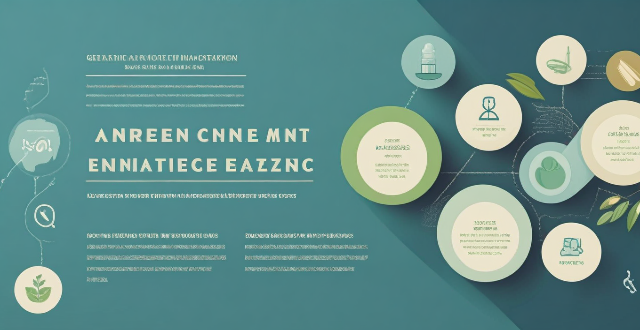
What are the different levels of biosafety containment and when should they be used ?
Biosafety containment levels are measures taken to isolate hazardous biological agents in labs and research facilities. These range from 1 (low risk) to 4 (high risk), with each level indicating the severity of the risk associated with the agent and the corresponding safety measures required to handle it. Examples include most microorganisms used in teaching labs (BSL-1), human pathogens like Salmonella (BSL-2), Mycobacterium tuberculosis (BSL-3), and Ebola virus (BSL-4). The appropriate biosafety containment level should be determined based on a risk assessment of the biological agent being handled, taking into account factors such as pathogenicity, mode of transmission, availability of effective treatments or vaccines, and potential impact on public health.

How can biosafety be improved in healthcare facilities ?
Improving biosafety in healthcare facilities involves implementing clear policies, using advanced technology, and creating a culture of safety. Specific strategies include developing SOPs, regular training, designated biohazard areas, infection control measures, surveillance, waste management, emergency response planning, encouraging reporting, leadership support, and staying updated with scientific advancements.

What is the regulatory environment for private equity ?
Private equity firms are subject to various regulatory requirements, including disclosure, anti-money laundering and know your customer regulations, securities laws, and tax laws. The specific regulations vary across different regions and countries, with the United States being regulated by the Securities and Exchange Commission (SEC) and the Financial Industry Regulatory Authority (FINRA), Europe by the Alternative Investment Fund Managers Directive (AIFMD), and Asia having widely varying regulations across different countries. Despite these regional variations, key principles such as transparency, disclosure, and compliance with securities and tax laws are common across all jurisdictions.

How do biosafety policies address the risk of accidental or intentional release of harmful biological agents ?
Biosafety policies are comprehensive measures designed to manage the risks associated with accidental or intentional releases of harmful biological agents. These include: 1. **Biosafety Levels**: Four tiers of guidelines for handling different risk groups of microorganisms, each with specific facility, equipment, and training requirements. 2. **Laboratory Procedures**: Strict adherence to safety procedures using engineering controls, personal protective equipment, standard microbiological practices, and waste management protocols. 3. **Regulations and Compliance**: Government laws and regulations ensuring safe handling through transportation guidelines, facility registration, reporting requirements, and oversight by agencies like the CDC. 4. **Training and Education**: Regular sessions on biosafety practices, emergency response, and continuous learning to keep personnel updated. 5. **Incident Response Plans**: Preparedness for incidents through emergency response teams, decontamination procedures, medical treatment, and communication strategies. By addressing these aspects diligently, biosafety policies aim to minimize the risk of accidental or intentional release of harmful biological agents.

What is the process for obtaining approval from regulatory agencies for a new vaccine ?
The process for obtaining approval from regulatory agencies for a new vaccine includes pre-clinical trials, phase 1, 2, and 3 clinical trials, submission to regulatory agencies, and post-marketing surveillance. This process ensures that the vaccine is safe and effective before it is made available to the public.
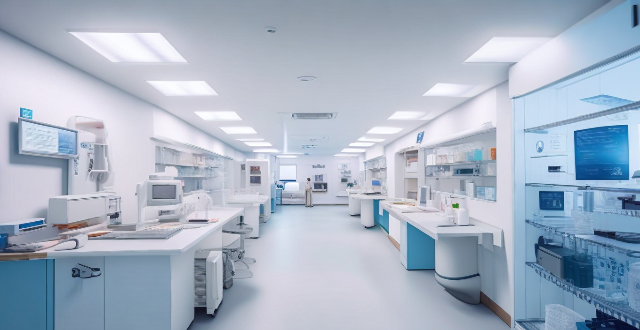
What are the key components of an effective biosafety policy ?
An effective biosafety policy is crucial for any organization that handles biological materials. It ensures the safety of personnel, the environment, and the public by minimizing risks associated with biological agents. Key components of an effective biosafety policy include: introduction, responsibilities, hazard identification and risk assessment, biosafety levels, engineering controls, administrative controls, personal protective equipment (PPE), waste management, incident response plan, and review and updates. Incorporating these key components into your biosafety policy can create a comprehensive framework that ensures the safe handling of biological materials and protects the health and safety of your employees and the environment.
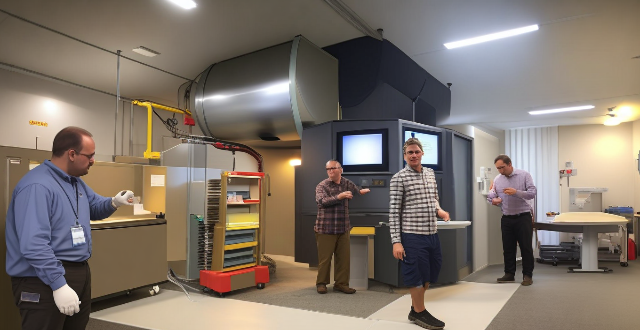
Can you explain the difference between biosafety levels 1-4 ?
Biosafety Levels (BSL) are guidelines for handling hazardous biological agents, with four levels of increasing risk and safety measures. BSL-1 is for non-pathogenic organisms, BSL-2 for moderate risk agents, BSL-3 for serious disease-causing agents, and BSL-4 for highly dangerous agents like Ebola. Differences include lab design, access control, safety equipment, and procedures to protect personnel and the environment.

What role do personal protective equipment (PPE) play in maintaining biosafety ?
PPE is vital for maintaining biosafety by preventing exposure to harmful biological agents, reducing contamination, complying with regulations, and promoting safety awareness. Types of PPE include physical barriers like gloves and gowns, eye and face protection, respiratory protection, and head protection. Best practices involve ensuring proper fit, following correct donning and doffing procedures, replacing damaged or contaminated PPE, storing it properly, and regularly inspecting it for wear or damage.

What are the potential risks associated with biosafety breaches ?
Biosafety breaches pose significant risks to human health, the environment, and biodiversity. These risks include infection through direct exposure or aerosol transmission, toxicity from microorganism-produced toxins, allergies, ecosystem disruption, biodiversity loss, genetic exchange, agricultural impacts, trade and travel restrictions, public fear, liability and compensation issues, and ethical concerns regarding genetically modified organisms. Facilities handling hazardous biological materials must implement strict safety measures to prevent these incidents.
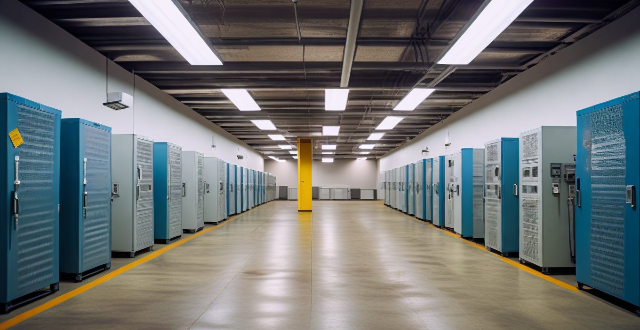
How can biosafety be maintained during transportation of biological materials ?
Transporting biological materials requires adherence to biosafety protocols, including compliance with regulations, proper packaging, temperature control, security measures, training of personnel, incident response planning, and waste management. Following these guidelines ensures the safety of all parties involved and prevents contamination or harm to individuals and the environment.
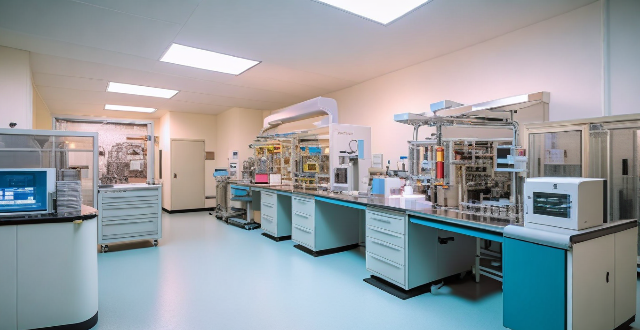
What measures should be taken to ensure compliance with biosafety policies in laboratories and research facilities ?
Ensuring biosafety compliance in laboratories and research facilities is crucial for the protection of personnel, the environment, and research subjects. Measures such as regular training sessions, competency assessments, clear policies and procedures, proper use of personal protective equipment (PPE), effective waste management, and well-developed emergency response plans should be implemented to create a safe working environment.

What regulatory challenges do Fintech companies face ?
Fintech companies face regulatory challenges such as compliance with existing regulations, adapting to evolving regulations, and balancing innovation and regulation. They must deal with lack of clarity in laws, conflicting regulations, high cost of compliance, rapid changes in regulations, collaboration with regulators, fostering innovation, risk management, and educating stakeholders. To succeed, fintech companies must stay informed, collaborate with regulators, foster innovation while managing risks, and educate their stakeholders about regulatory requirements.

How does risk management relate to compliance and regulatory requirements ?
Risk management and compliance are interconnected aspects of organizational operations, aimed at safeguarding against potential losses and legal issues. Risk management identifies and prioritizes risks impacting objectives, while compliance ensures adherence to laws and regulations. An integrated approach enhances efficiency, and collaboration between departments is key for success. Regulatory requirements significantly influence risk management and compliance strategies, with direct rules and indirect environmental changes. Understanding these dynamics is vital for maintaining reputation and avoiding compliance breaches.

How long does it typically take to develop a new vaccine ?
Developing a new vaccine is a complex and time-consuming process that involves multiple stages of research, testing, and approval. It typically takes several years to develop a new vaccine, with the duration varying depending on factors such as the type of pathogen being targeted, the availability of existing research, and regulatory requirements. The process includes research and development, preclinical testing, clinical trials in humans (Phases I, II, and III), regulatory approval, and manufacturing and distribution.

How does financial regulation differ across countries ?
Financial regulation is the process by which governments and other regulatory bodies oversee and control the financial sector. The objective of financial regulation is to ensure the stability of the financial system, protect consumers, promote fair competition, and prevent financial crimes. However, the way financial regulation is implemented varies significantly across countries due to differences in economic structures, legal systems, political ideologies, and cultural values. The legal and institutional framework for financial regulation differs widely among countries. Some countries have a centralized regulatory body that oversees all aspects of the financial sector, while others have multiple regulators responsible for different segments of the market. Capital requirements and risk management practices also vary across countries. In general, developed countries tend to have stricter capital requirements and more sophisticated risk management practices than emerging markets. Consumer protection and disclosure requirements are another area where financial regulation differs across countries. In some countries, such as the United States, there is a strong emphasis on protecting investors from fraudulent activities and ensuring transparency in financial transactions. Taxation policies and anti-money laundering (AML) regulations also play a role in shaping financial regulation across countries. Tax havens, for example, attract foreign investment by offering low tax rates and minimal regulatory oversight, which can lead to concerns about money laundering and tax evasion. Cultural and societal factors can influence financial regulation in various ways. For instance, trust in government institutions and the rule of law tends to be higher in countries with stronger democratic traditions, which may lead to greater acceptance of regulatory interventions. Conversely, countries with weaker institutions or a history of corruption may face challenges in implementing effective financial regulation. Additionally, social preferences regarding income inequality, environmental sustainability, and other issues can shape the priorities of financial regulators in different countries.

How do government policies influence the growth of electric vehicle infrastructure ?
Government policies play a crucial role in shaping the growth of electric vehicle (EV) infrastructure. These policies can be broadly categorized into regulatory, financial, and informational measures. Regulatory policies set standards and mandates that must be followed by businesses and consumers, while financial incentives and disincentives are powerful tools used by governments to encourage the adoption and expansion of EV infrastructure. Information plays a vital role in shaping consumer behavior and market dynamics, with governments leveraging this by providing relevant data and promoting awareness. In conclusion, government policies across regulatory, financial, and informational domains have a profound impact on the growth of electric vehicle infrastructure.

What are the risks associated with investing in the carbon trading market ?
The carbon trading market offers lucrative investment opportunities but also carries significant risks, including price volatility, lack of transparency, legal and regulatory changes, and environmental impacts. To mitigate these risks, investors should diversify their portfolios, conduct thorough research, stay updated on regulatory changes, and consider the environmental impact of their investments. By taking these steps, investors can potentially reduce their exposure to risks while still benefiting from the profitability of the carbon trading market.

What is the outlook for tech stocks in 2022 ?
The outlook for tech stocks in 2022 is uncertain due to several factors that could impact their performance. Key factors affecting tech stocks in 2022 include the ongoing economic recovery from the COVID-19 pandemic, potential rising interest rates, regulatory risks, and innovation and disruption. While the economic recovery and continued innovation in the sector could drive growth, rising interest rates and regulatory risks could pose challenges for some companies. Investors should carefully consider these factors before making any investment decisions in the tech sector.

What measures should be taken to prevent the spread of infectious diseases in a laboratory setting ?
In a laboratory setting, it is crucial to take measures to prevent the spread of infectious diseases. This includes wearing personal protective equipment (PPE), practicing proper hand hygiene, using biosafety cabinets for handling pathogens, and properly disposing of biohazardous waste. Regular cleaning and disinfection of surfaces and equipment is also essential, as well as following specific protocols for procedures like centrifugation and pipetting. By implementing these measures, the risk of infection can be significantly reduced.

What are the recommended disinfection procedures for healthcare facilities to ensure patient safety ?
Healthcare facilities must implement strict disinfection procedures to ensure patient safety and prevent disease spread. These include using PPE, practicing hand hygiene, cleaning and disinfecting surfaces, sterilizing critical instruments, and managing waste properly. Specific areas of concern are patient rooms, operating rooms, labs, waiting areas, and public spaces. Regular training, surveillance, and environmental monitoring are essential for maintaining effective disinfection practices.

Is decentralized finance regulated by governments or financial institutions ?
The regulation of decentralized finance (DeFi) is a complex issue that involves both government and financial institutions. Governments can regulate DeFi indirectly through tax laws and anti-money laundering/know your customer (AML/KYC) laws, while also taking enforcement actions such as investigations, sanctions, and fines. Financial institutions may engage in self-regulation by establishing industry standards and best practices, building bridges with traditional finance, and offering insurance products tailored for DeFi risks. As the DeFi ecosystem continues to grow, it is likely that both government and financial institution regulation will continue to evolve.